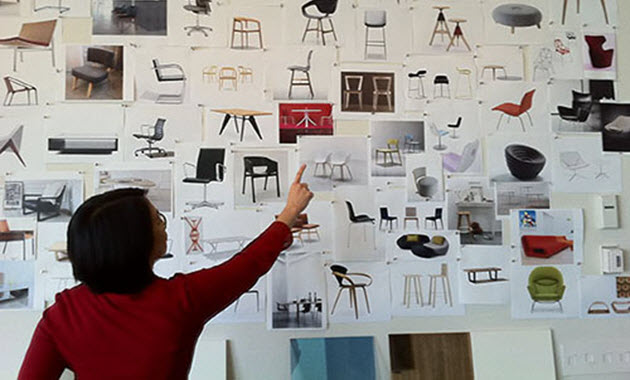Simple Steps to Become an Interior Designer In India

Interior design focuses on the experience of a space and how we can make it more beautiful. Together with the architects, interior designers create spaces. The most common misconception about this field is that it has to do with “decorating a place that is not”. In addition to providing interior design services, interior designers also plan the layout of any establishment, be it a house, an office, or any other commercial complex, so that the space available can be utilized to its maximum potential. Further, interior designers work to support the structure, dimension, geometry, furnishing, colour scheme, and decoration of their establishment.
Designing the work and living environments of clients in both commercial and residential settings is the main focus of interior designers. The company is responsible for the complete design and construction process, starting with scoping out the client’s needs, sketching plans, developing them with a CAD software, purchasing materials, and implementing the plan according to the client’s requirements.
What are the simple steps to becoming an interior designer in India?

The following are the key steps a person needs to take in order to grow as a good interior designer:
1. Get a Diploma or Degree in Interior Designing
In addition to being creative, imaginative, and artistic, you should be organized and disciplined to learn the art of interior designing. It is important for interior designers to have the ability to handle difficult clients, work collaboratively with architects and contractors, and manage time and budget effectively. Considering that interior design is one of the challenging fields, it is recommended to get a professional diploma in interior design or certification or formal degree to gain relevant understanding and experience.
2. Educate yourself in Formal Concept
The second step to becoming an excellent and knowledgeable interior designer is to know what questions to ask. Various terms and ideas that are used in the formal concepts determine what affects your design and how you approach an interior design project. By using design methods, a framework is created for implementing designs. Using design theory, you can determine why certain designs succeed and others fail.
3. Get Internships and Build Network
Assisting an interior design firm is a vital step in establishing a career as an interior designer. Learn about interior design through an internship at a firm or agency. This gives you a better insight into what an interior designer’s life is like, and how to communicate with the people whom you meet at the job. Moreover, you develop a network of trusted and influential people within your industry.
4. Create an impressive Portfolio
It is a crucial step in establishing your interior design career. Build a strong portfolio and personal brand by taking photos of your recently completed projects, sample boards, hand-drawn sketches, Sketch-up and CAD drawings, etc. during your time in the Design Institute. The right portfolio can persuade employers to hire you as an interior designer.
5. Continually upgrade your skills
Technical skills, business knowledge, and design know-how aren’t all acquired at the same time. It takes time to develop and master. Keep up-to-date with learning to ensure your skills and abilities stay sharp.
FAQs
Q: What are some popular software programs used by interior designers in India? A: Some popular software programs used by interior designers in India include AutoCAD, SketchUp, 3ds Max, Revit, and Photoshop. These programs allow designers to create detailed 2D and 3D models of their designs and present them to clients in a professional manner.
Q: What are some qualities that make a successful interior designer? A: Successful interior designers in India possess qualities such as creativity, attention to detail, strong communication skills, the ability to work collaboratively with clients and other design professionals, and the ability to stay up-to-date with the latest design trends and technologies.
Q: What are some examples of interior design specializations in India? A: Some examples of interior design specializations in India include residential design, commercial design, hospitality design, healthcare design, and exhibition design. Interior designers can also specialize in specific areas such as lighting design, furniture design, or color consulting.
Q: How important is networking in the interior design industry in India? A: Networking is very important in the interior design industry in India, as it allows designers to meet potential clients, build relationships with other design professionals, and stay up-to-date with industry trends and events. Joining professional organizations and attending industry events can help designers build their network and grow their business.
Q: What are some common misconceptions about interior designers in India? A: Some common misconceptions about interior designers in India include that they only focus on aesthetics and do not consider functionality, that they are expensive and only work with high-end clients, and that they do not need any formal education or training. In reality, interior designers in India must balance aesthetics and functionality, can work with a range of clients and budgets, and typically have formal education and training in the field.
JD Institute of Fashion Technology continuously provides training for establishing interior designers, and to help you sharpen your design skills and market your talents more effectively. To know more connect with the team of our experts.






